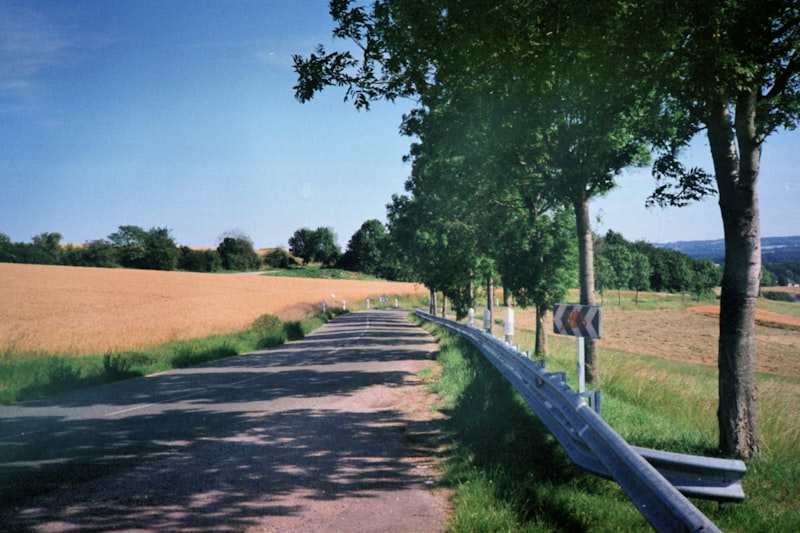Imagine national parks as giant fortresses of nature, where the balance of ecosystems remains undisturbed. They provide habitats for a wide array of species, from the majestic Bengal tigers prowling through the forests of India’s Ranthambore National Park to the elusive mountain gorillas peacefully roaming the mist-covered slopes of Uganda’s Bwindi Impenetrable Forest.
These protected areas serve as laboratories for scientists studying wildlife behavior and biodiversity. By preserving natural habitats, national parks safeguard genetic diversity, which is essential for species’ adaptation and survival in the face of climate change and other challenges.
Moreover, national parks offer recreational opportunities for visitors, allowing them to connect with nature firsthand. This connection fosters a sense of appreciation and responsibility towards conservation efforts. When people experience the beauty and fragility of these ecosystems, they are more likely to support initiatives aimed at preserving them for future generations.
From Yellowstone in the United States to Serengeti in Tanzania, each national park has its own unique contribution to biodiversity conservation. They act as buffers against habitat loss and degradation, illegal wildlife trade, and poaching. Rangers and conservationists work tirelessly to protect these areas, ensuring that wildlife can thrive without fear of extinction.
Preserving Wilderness: How National Parks Safeguard Wildlife Habitats
Imagine stepping into a national park: towering trees stretch towards the sky, rivers meander through valleys, and animals roam freely in their natural habitats. These protected areas serve as havens for countless species, from majestic bears to delicate butterflies. They provide vital breeding grounds, secure feeding areas, and safe havens during harsh weather conditions.
But why are these habitats so important? Each creature, from the tiniest insect to the largest predator, plays a role in the delicate balance of nature. For instance, bees pollinate flowers, ensuring the growth of plants that other animals depend on for food. Predators like wolves help control herbivore populations, preventing overgrazing that can devastate vegetation.
National parks act as guardians of biodiversity, preserving genetic diversity within species and ensuring that ecosystems remain resilient to environmental changes. This resilience is crucial in the face of climate change, as these protected areas serve as refuges where species can adapt and survive.
Moreover, the benefits extend beyond wildlife. National parks attract millions of visitors each year, providing opportunities for people to connect with nature and find solace in its beauty. These experiences foster a deep appreciation for the natural world and inspire conservation efforts beyond park boundaries.
In essence, national parks are more than just scenic landscapes; they are vital ecosystems that support life in all its forms. By preserving wilderness and safeguarding wildlife habitats, these parks ensure a future where nature can continue to amaze and inspire generations to come.
Beyond Boundaries: National Parks’ Vital Impact on Wildlife Conservation

Imagine these parks as giant shields, safeguarding endangered species and preserving biodiversity. They provide refuge for animals that might otherwise face extinction due to habitat loss or human encroachment. Take, for instance, the African savannas protected within parks like Serengeti National Park in Tanzania or Kruger National Park in South Africa. Here, lions roam freely, elephants traverse ancient migratory paths, and rhinos find safe haven from poaching.
The impact of national parks on wildlife conservation cannot be overstated. They offer a controlled environment where researchers can study animals in their natural habitat, contributing invaluable data for conservation efforts worldwide. By maintaining these ecosystems, parks also help regulate local climates and protect water sources that sustain both wildlife and nearby communities.
Moreover, these parks are living classrooms where visitors can witness the wonders of nature firsthand. By experiencing the beauty and complexity of these ecosystems, people develop a deeper appreciation for the importance of conservation. This awareness often translates into support for policies and initiatives aimed at preserving natural habitats globally.
In essence, national parks represent a beacon of hope for biodiversity. They exemplify humanity’s commitment to coexist with nature harmoniously. As we strive to mitigate environmental challenges such as climate change and habitat degradation, these protected areas stand as resilient bastions, ensuring that future generations can continue to marvel at the diversity of life on Earth.
Nature’s Guardians: The Crucial Role of National Parks in Protecting Wildlife
National parks stand as formidable fortresses safeguarding our planet’s precious wildlife. These protected areas are not merely pieces of land set aside for leisure; they are vital sanctuaries meticulously designed to preserve biodiversity and ensure the survival of countless species.
Imagine a vast expanse where majestic elephants roam freely, where rare orchids bloom undisturbed, and where endangered species find refuge from the encroachments of human activity. This is the essence of national parks — havens of tranquility amidst the bustling world. They serve as natural laboratories where scientists study ecosystems, helping us understand the delicate balance of nature.
One of the most profound aspects of national parks is their ability to protect endangered species. By providing undisturbed habitats, parks enable populations to thrive and recover. For instance, the reintroduction of wolves in Yellowstone National Park demonstrated how top predators can regulate entire ecosystems, benefiting species down the food chain.
Moreover, these parks act as buffers against climate change. Forests within national parks absorb carbon dioxide, mitigating greenhouse gas emissions and combating global warming. They are living proof of nature’s resilience and its capacity to heal when given the chance.
But their significance extends beyond ecological benefits. National parks fuel local economies by attracting tourists who seek solace in nature’s embrace. They create jobs, support local businesses, and inspire generations to cherish and protect our natural heritage.
Conserving Biodiversity: National Parks as Sanctuaries for Endangered Species
In these parks, endangered species find refuge from the encroachment of human activity. Away from the pressures of urbanization and industrialization, they can thrive in their natural habitats, undisturbed by the disruptions of modern life. From majestic predators like the Bengal tiger to delicate pollinators such as the Monarch butterfly, each creature finds its place in the delicate web of life that these parks protect.
What makes national parks unique is their role in preserving not just individual species but entire ecosystems. By conserving large tracts of land, parks safeguard the intricate relationships between plants, animals, and their environments. This holistic approach ensures that biodiversity flourishes, providing resilience against threats like climate change and habitat loss.

Visitors to these parks often experience a sense of awe and wonder at the diversity of life that surrounds them. It’s a reminder of our interconnectedness with nature and the responsibility we bear to protect it. Each trek through the forest or encounter with a rare bird is a lesson in humility and appreciation for the wonders of the natural world.
As stewards of these invaluable resources, we must continue to support efforts to expand and maintain national parks. Their role in preserving biodiversity is not just a scientific endeavor but a moral imperative—a commitment to future generations and the planet we call home. In these protected havens, endangered species find hope, and humanity finds inspiration to coexist harmoniously with nature.
Frequently Asked Questions
Why are national parks crucial habitats for wildlife?
Discover why national parks are vital habitats for wildlife. These protected areas provide sanctuary for diverse species, preserving natural ecosystems and biodiversity. Learn how national parks support conservation efforts and ensure sustainable habitats for wildlife.
What conservation strategies are implemented in national parks to protect wildlife?
Learn about the conservation strategies used in national parks to safeguard wildlife. Discover effective methods and initiatives aimed at protecting diverse species and preserving natural habitats.
How do national parks help maintain biodiversity?
Learn how national parks play a crucial role in preserving biodiversity through habitat protection, conservation efforts, and sustainable management practices. Discover the ways these protected areas support diverse ecosystems and wildlife populations.
How do national parks contribute to preserving endangered species?
National parks contribute to preserving endangered species by providing protected habitats where these animals can thrive without human disturbance. These areas serve as safe havens, allowing species to breed, feed, and live undisturbed, which helps in stabilizing their populations and promoting biodiversity conservation.
What is the importance of national parks in wildlife conservation?
National parks play a crucial role in wildlife conservation by providing protected habitats where diverse species can thrive undisturbed. These areas help preserve biodiversity, protect endangered species, and promote ecological balance.


